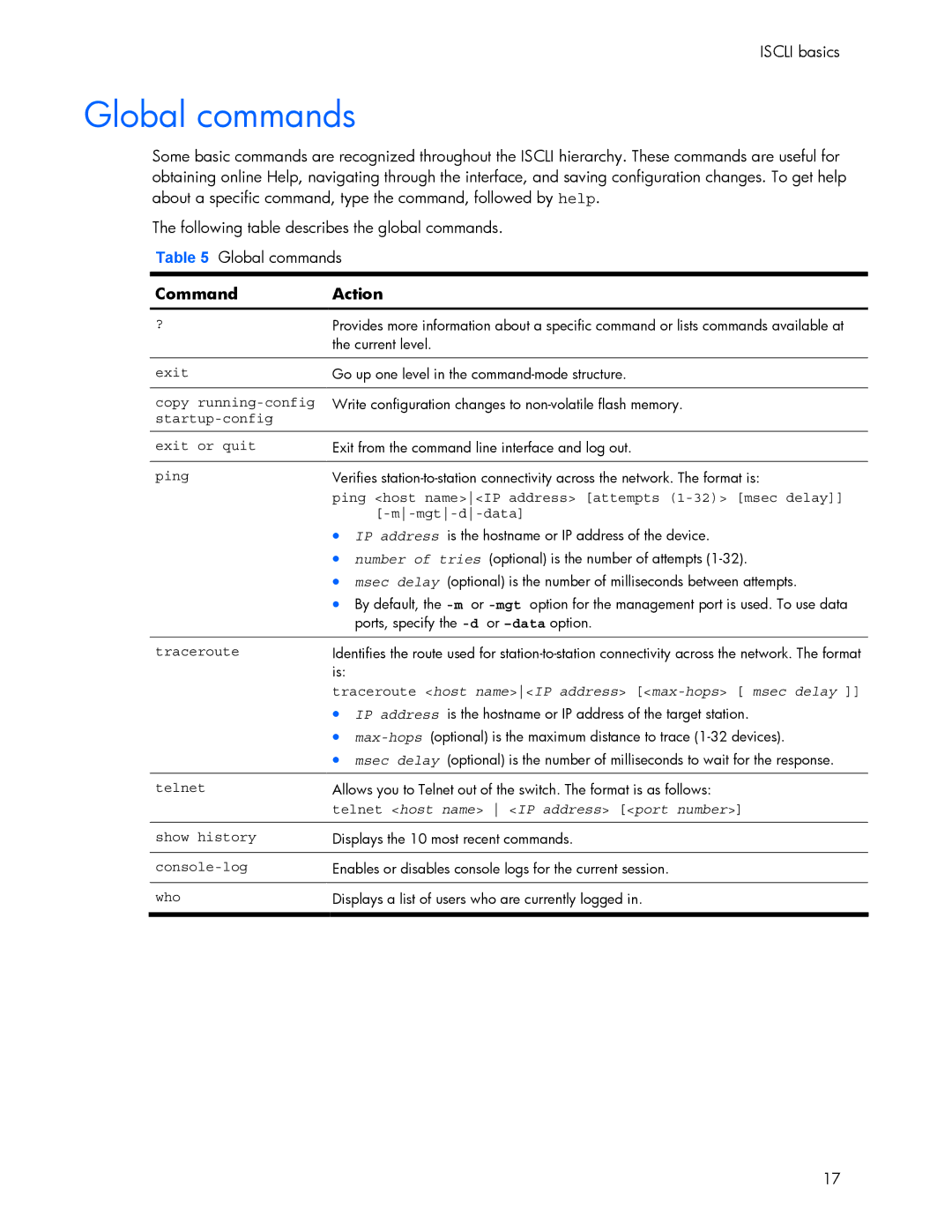
ISCLI basics
Global commands
Some basic commands are recognized throughout the ISCLI hierarchy. These commands are useful for obtaining online Help, navigating through the interface, and saving configuration changes. To get help about a specific command, type the command, followed by help.
The following table describes the global commands. Table 5 Global commands
Command
?
exit
copy
exit or quit
ping
traceroute
Action
Provides more information about a specific command or lists commands available at the current level.
Go up one level in the
Write configuration changes to
Exit from the command line interface and log out.
Verifies
ping <host name><IP address> [attempts
•IP address is the hostname or IP address of the device.
•number of tries (optional) is the number of attempts
•msec delay (optional) is the number of milliseconds between attempts.
•By default, the
Identifies the route used for
traceroute <host name><IP address> [<max-hops> [ msec delay ]]
•IP address is the hostname or IP address of the target station.
•
•msec delay (optional) is the number of milliseconds to wait for the response.
telnet
show history
who
Allows you to Telnet out of the switch. The format is as follows:
telnet <host name> <IP address> [<port number>]
Displays the 10 most recent commands.
Enables or disables console logs for the current session. Displays a list of users who are currently logged in.
17
